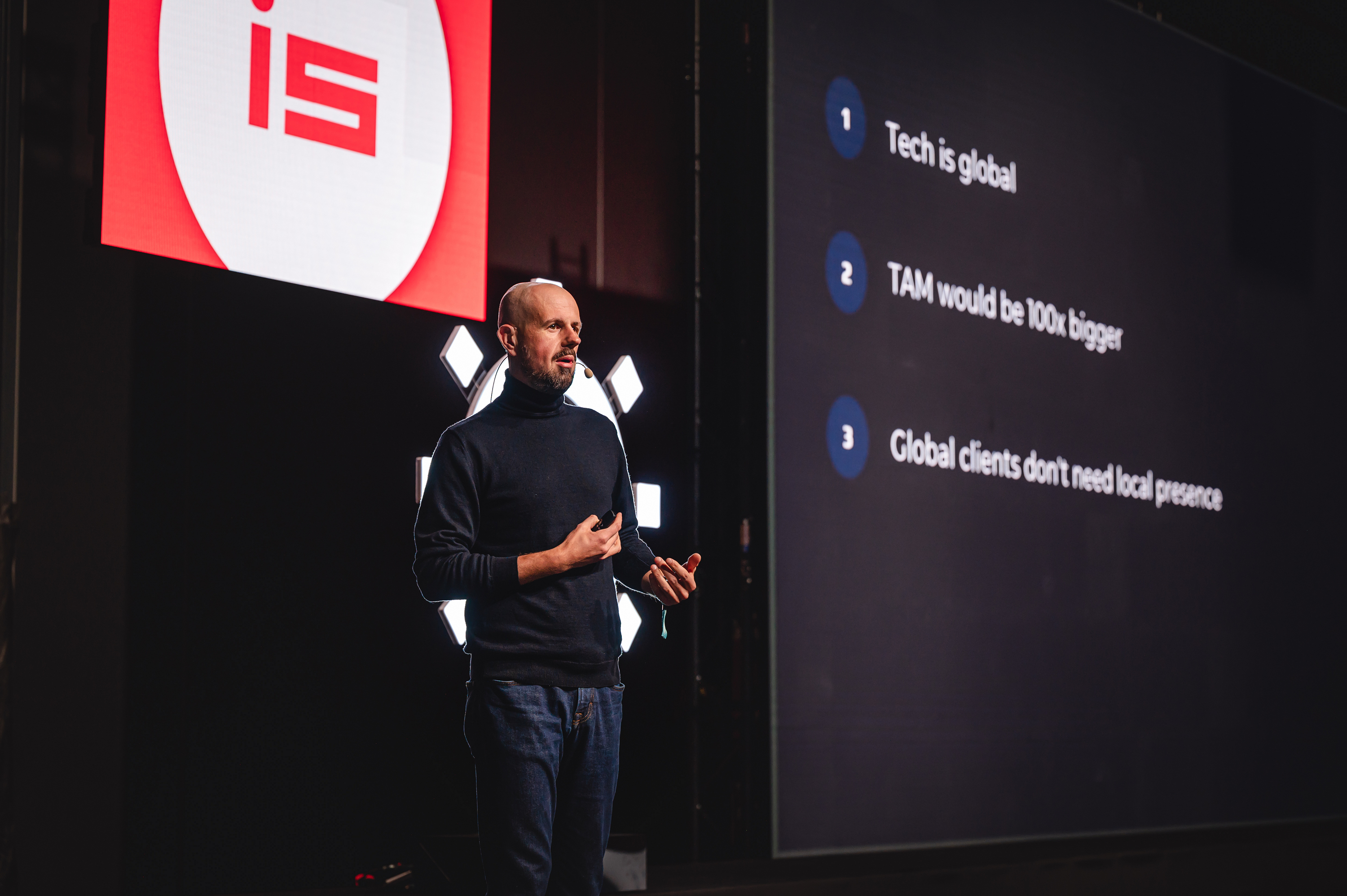Where do Startup ideas come from?
"Okay Tomek, you’ve convinced me - I want to start a company. But where do I even get an idea?"
That question keeps coming up. Starting your first, tenth, or thirtieth company? It’s always hard. But there’s one strategy that gives you a massive advantage: Catch a tornado. Let me explain.
My first Tornado: Usability
As a young guy from a small village, I moved to Wrocław and landed a sales job at Janmedia. The company was selling web development services to US clients — and I had to pitch them to Polish businesses. Expensive, no real differentiators. I was probably the worst-performing salesperson in Wrocław. Maybe in Poland.
But I was curious. I kept noticing the term usability in our US projects. I had a design background and something about it clicked. I dove in. Read every book I could — including Don’t Make Me Think, which blew my mind.
No one in Poland was talking about usability yet. So, I launched a blog: webusability.pl. I wasn’t an expert — but I was one blog post ahead of my readers. That made me look smart enough.
Eventually, I created a free PDF course on usability. It wasn’t brilliant — but it was the first in Polish and free. Thousands downloaded it.
One of them worked at ING Bank. They reached out: could we audit their online banking UX?
We had no idea how — but we did it anyway. It went well. ING was happy. We asked to publish a press release about the project. They agreed.
That one press release created a mini tornado. Other banks saw that ING had done something new — and felt FOMO. When the next bank hired us, FOMO got stronger.
Eventually, it exploded — every big bank and corporate in Poland suddenly wanted to “improve usability.” A whole market emerged. We weren’t the only players, but there were few of us — and demand was huge.
That’s when I realized: value sells itself. If you’re solving a real problem, you don’t need to be a great salesperson.
What is a Tornado?
In his book Inside the Tornado, Geoffrey Moore defines the tornado as a phase of mass-market adoption of a new technology category. It's no longer about convincing early adopters. It’s about capturing the market before your competitors do.
Tornadoes are fast, brutal, and full of opportunity.
Here’s what defines them:
- Customers no longer want experiments — they want a solution that just works, now.
- The market’s only question is: “Who’s the category leader?”
- Speed wins. Not polish.
- Demand explodes. Timing is everything.
What should you do in a Tornado?
- Stop customizing for each customer. Standardize.
- Focus on scalable delivery and reliability.
- Hire fast. Automate. Lock in distribution channels.
- Scale. Hard.
As Moore puts it:
“In the tornado, the market wants to buy, not be sold to. The winners are those who deliver operational excellence and dominate their category before the dust settles.”
If you're in a tornado and you're not growing — you're in trouble.
Examples of real Tornadoes
- Cloud Computing (2008–2015) – AWS, Azure, GCP. Mass migration from physical servers to the cloud.
- Smartphones (2007–2012) – iPhone launch triggered a wave of adoption. Mobile apps became a must.
- Remote Work (2020–2023) – COVID collapsed a decade of transformation into two weeks.
- Fintech (2015–2021) – Revolut, N26, Klarna. Mobile-first, no-fee banking exploded.
- Video Streaming (2013–2019) – Netflix killed cable. Disney+ rewrote Hollywood.
- No-Code Commerce (2015–2022) – Shopify enabled anyone to launch a store without engineers.
- Generative AI (2022–today) – ChatGPT, Midjourney, Eleven Labs. The nerd toy became essential.
Why you should look for a Tornado
Because it gives you an unfair advantage.
- The market pulls you forward. No need to steal customers — demand finds you.
- Tornado-level growth forgives many early mistakes.
- No marketing needed. Just deliver.
But how do you find one?
How to spot a Tornado
There’s no formula. But here’s what helps:
- Listen to what excites people.
- Join communities early.
- Watch for ideas showing up in podcasts, Twitter threads, and conference keynotes — before they hit TechCrunch.
Most people don’t suffer from lack of ideas — they suffer from indecision. They see multiple waves forming and wait... and wait...
That’s the best way to miss a good wave.
My Tornadoes over time
- CD-ROMs (1990s) – Suddenly, software and games could be huge.
- The Internet (1995–2005) – .com boom, websites everywhere.
- E-commerce (2000–2012) – Buying online became normal.
- Mobile Apps (2010–2016) – "We need an app!" was every CEO's mantra.
- React Native (2015–2020) – One repo, two platforms.
- Composable Commerce (2020–2024) – API-first, microservices instead of monoliths.
- AI (2022–now) – Everyone’s racing to adopt it before they’re left behind.
Lessons Tornadoes taught me
Working in a space just entering the tornado phase is the best thing you can do to build a great company.
When you're surfing a massive wave of adoption:
- You can make mistakes.
- You can move fast.
- You just need to deliver.
When my brother Piotr launched Vue Storefront, he did it at the intersection of two tornadoes: Vue.js and headless commerce. Developers wanted to learn both — and his open-source project gave them that opportunity.
My own usability journey taught me this:
- Becoming a visible expert in a growing niche creates exposure.
- Exposure leads to opportunities.
- And opportunities lead to… your next tornado.
Want more insights like this?
Follow me on LinkedIn — I share practical lessons for founders every week.

.svg)
.svg)
.svg)
.png)

.svg)
.svg)
.svg)


